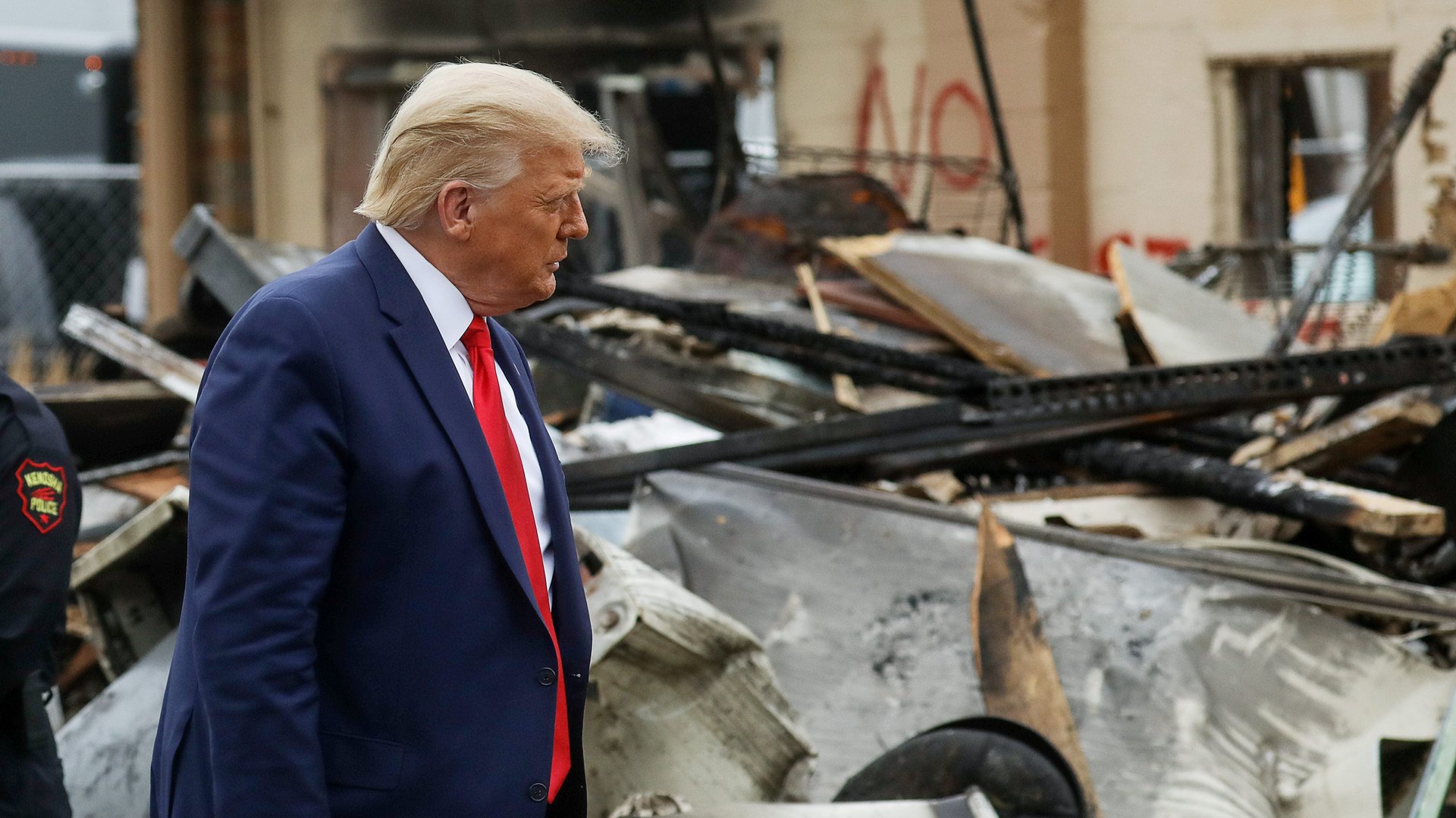Trump is forgetting Kenosha’s Black community
Donald Trump had high praise for law enforcement officials and little time to sympathize with the family of Jacob Blake and the Black community during his recent visit to Kenosha. The president traveled to the Wisconsin city on Tuesday to survey damage from protests that erupted after Blake was shot several time by a policeman in the back.


Donald Trump had high praise for law enforcement officials and little time to sympathize with the family of Jacob Blake and the Black community during his recent visit to Kenosha. The president traveled to the Wisconsin city on Tuesday to survey damage from protests that erupted after Blake was shot several time by a policeman in the back.
Kenosha is the kind of place the president needs to win to be reelected in November. The county, population 170,000, narrowly went to Trump in 2016, when he campaigned on the promise of restoring prosperity to “the forgotten men and women” in former manufacturing hubs in states like Wisconsin and Michigan.
He might have a harder time selling that narrative this time around, with nationwide protests against police brutality and the coronavirus’s disproportionate damage to communities of color putting inequality and racism at the center of the public debate.
Kenosha is emblematic of where Trump’s 2016 story falls apart. For more than 80 years, its factories churned out carriages, wagons, hosiery, as well as millions of automobiles for companies like Renault and the American Motors Corporation. Like many places in the Midwest that voted for Trump, its manufacturing industry has since shrunk. Between 2000 and 2010, manufacturing employment in the county fell by more than 25%.
But in the following decades, the area has transformed its economy and is doing relatively well by many measures. From 2000 to 2018, the county’s population grew by almost 13%, according to the US Census. (Wisconsin’s overall population grew by just over 8% for the same period.) The county’s economy expanded by 80% to nearly $7 billion from 2001 to 2018, according to data from the US Bureau of Economic Analysis.
Its manufacturing has been recovering through companies like the German candy maker Haribo, medical manufacturer MedTorque, and paint and coating company Rust-Oleum. It has business park developments, as well as lots of available industrial space for future expansion and growth.
The county’s seat, also named Kenosha, has also benefitted from its proximity to Chicago, refashioning itself as a bedroom community with affordable housing. The city, Wisconsin’s fourth largest, has a younger-than-average population and several post-secondary schools.
While Kenosha has prospered, its Black residents have been left behind. The unemployment rate in Kenosha and Racine, an adjacent county, was 5% for whites and 7% for Hispanics in 2014-2018, according to the latest US Census data. Meanwhile, the unemployment rate for Black residents was three times higher at 15%. (Because Kenosha’s Black population is relatively small—7% of the county’s population—we included nearby Racine to make the data more precise.)
Nearly half of black adults in the two counties live in a household with income of less than $50,000, compared to 17% for whites and 40% Hispanics, the Census data show.
The inequalities start at birth, with 17% of Black babies born in the county in 2017 registering lower-than-average birth weights, more than double the rate of white babies, according to a report from the Wisconsin Public Health department. In 2019, 66% of Black students in the Kenosha school district graduated from high school within four years, compared to almost 90% of white students.
There are signs that Trump recognizes he will need Black voters in Wisconsin to win in November. He has set up an office to court them in a Black Milwaukee neighborhood, as the Guardian reported. Siding with the police, as he did during his Kenosha visit, might not be the best way to court them.
Dan Kopf contributed to this story.